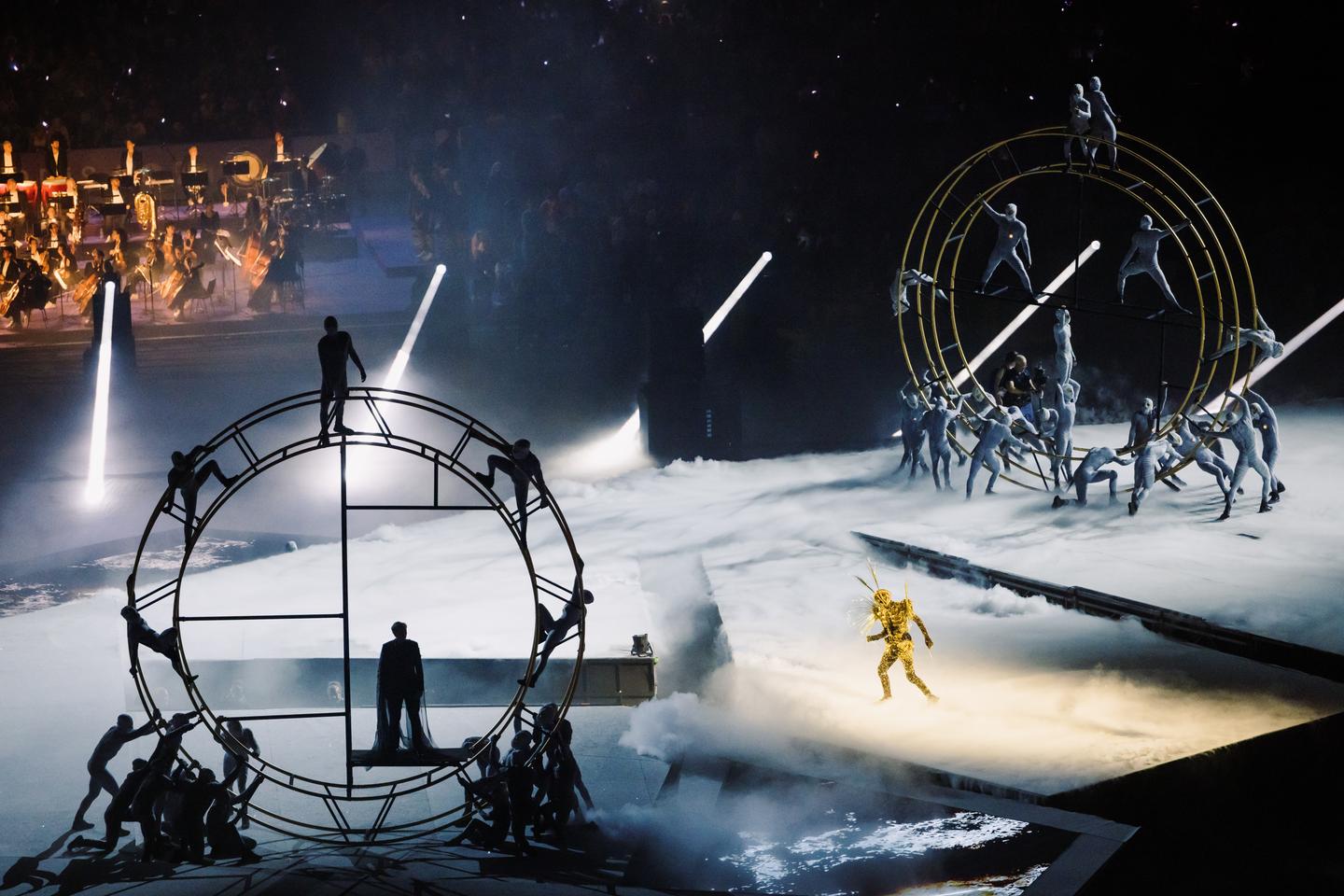It was a goosebumps moment. As a chorus of more than 71,000 voices sang words of peace and fraternity, there was emotion, the thrill of a shared, simple, luminous joy. An indescribable show had begun, part dance, part opera, part sound and light, part theater, each spectator with a small light on their wrist lighting up the night. Plus, of course, thousands of Olympic athletes gathering to celebrate their successes and parade before the people cheering for them, their hearts filled with the love of sports and celebrations.
And so it was at the Stade de France on the evening of Sunday, August 11, the closing day of the Paris 2024 Olympic Games. The closing ceremony was a tall order, so high had the bar been set by the parade of athletes down the Seine 17 days earlier, and by the joy that transformed Paris as top-level sport took place in stadiums across the city, in an event that magnified the French capital’s heritage. The final chapter had to tell the story of those happy days, pay tribute to the athletes, celebrate the values of the 45,000 volunteers who brought their smiles, their advice and kindness, offer a new perspective on the Games and on Paris too, and pass on the torch to Hollywood, with Los Angeles hosting the Games in 2028.
As the athletes entered the stadium the colors of their costumes blended together, like a living Impressionist painting. The thousands of competitors became bouncing kids again, dancing, hugging and snapping photos of each other, just as 9.5 million spectators had in the stadiums, capturing memories to be shared on social media. Much to the delight of spectators, dancers improvised a breakdance battle in one corner of the arena, an Olympic discipline for the Paris Games only. In their excitement some of the athletes invaded the track, a move that was not planned. “Thank you, ladies and gentlemen, athletes, for not coming up on stage,” the master of ceremonies, sports journalist and TV presenter Denis Brogniart, had to gently scold them.



Storytelling with science fiction
To the children sleeping inside all of the spectators, no matter their age, the director of the event Thomas Jolly used science fiction to tell a story about the rebirth of Olympism, that fragile idea of fraternity through sport. Dressed in a gold jumpsuit, dancer and contortionist Arthur Cadre descended from the sky as if returning to an Earth deserted by the Olympic spirit. The artist then opened up a choreography on a scale fit for the Stade de France, with more than 100 dancers traveling in all directions, like a circus spread across the continents of the planet, with the hope of reawakening the disappeared ancient Games. Paris is not Hollywood, but no one will be surprised to learn that it succeeded, and from the ruins, Olympic rings were lifted into the sky of Saint-Denis.
You have 62.95% of this article left to read. The rest is for subscribers only.

